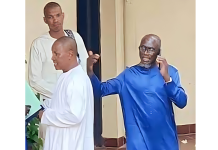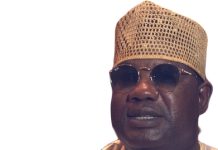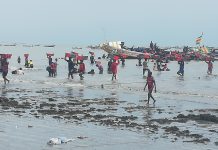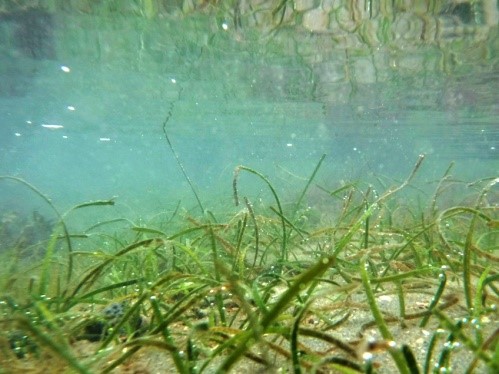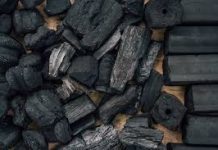With Madiba Singhateh
Resilient Sea-grass is a project introduced in The Gambia and seven other neighboring countries in order to enhance and map out sea-grass locations in various parts of these countries.
The project is in Senegal, Sierra Leone, Cape Verde, Guinea Conakry, Guinea Bissau and the Gambia with the sole objective to “conserve sea-grass to save marine diversity and enhance socio-economic development.”
According to ‘‘Resilencesea.org’’ site, the projects in the aforesaid countries will “evaluate the regional data currently available, and use it to create regional and national sea-grass distribution maps; work with national institutions to identify and collate data sets either previously unavailable or with limited distribution, and use them to improve accuracy of regional and national maps and to evaluate and communicate the benefits and services provided by sea-grass habitats to local communities, as well as national and regional decision-makers.
Walking along the sandy beaches of the coastal towns of Brufut and Kartong on 4th February 2021, Omar Sanneh of the Department of Parks and Wildlife who is the Project Coordinator and Assistant Focal Person for ‘‘Resilient Sea-grass Conservation’’ in The Gambia, said sea-grass is mostly found in rocky areas and under water.
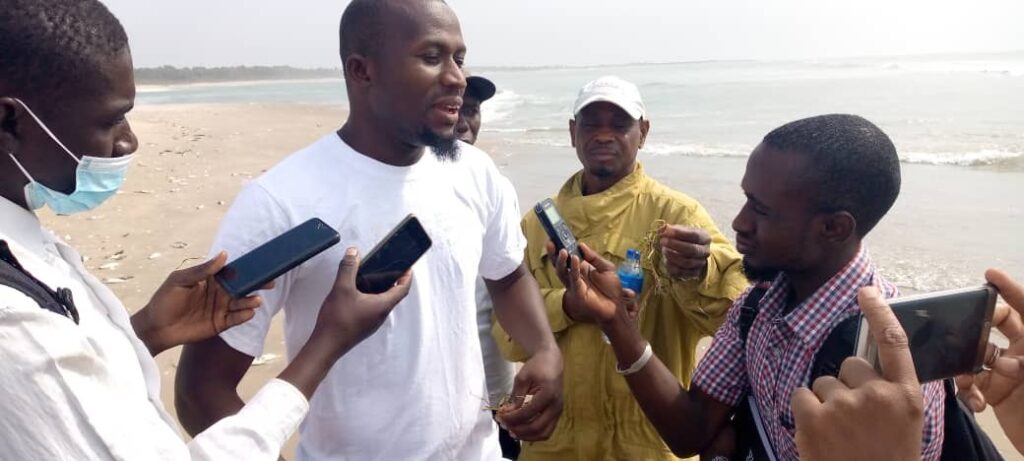
Sanneh, also identified sea-grass around the ocean to reporters during his field trip.
According to Sanneh, sea-grass is important for marine spices such as fish manatees and turtles because they serve as feed, breeding or spooning grounds for them.
According to Sanneh, the seven countries listed above were lucky to be part of this pilot program which will be done in three phases; that the first phase is to identify and map out sites which they are doing now.
“Phase one has two activities imbedded in it but the main focus of phase one is to identify sea-grass sites in various parts of the country and to map out these sites in order to continue quarterly motoring of sea-grass sites,” he said; that the project on resilient sea-grass look at the conservation of the sea.
“When you look at the sea, there is lot of biodiversity. So the project cannot look at these resources only, but at a particular resource called sea-grass. That is what you seeing here. So this is sea-grass and it is the focus of the study. This is very important and there are reasons about the study on sea-grass,” he said.
Sanneh said globally, not much is known about sea-grass, especially in the sub-region; that in The Gambia, their Department is the first to be part of a national training on sea-grass, thanks to the Director of Parks and Wildlife Ousainou Touray, who is the focal person for the program.
Speaking further, Sanneh said sea-grass is an underwater or submerge flowering plant that grows underwater and in a marine environment, adding that it does not grow in blackish or freshwater, but in salty water; that it can be found in shallow regions of the sea bed; that so far globally, they discovered over 70 species of sea-grass but in the sub-region, only three species are found and they are ‘‘Halodule wrigghtii’’, ‘‘Cymodocea nodosa’’ and ‘‘Zostera noltii’’.
“We are lucky to identify two of the species in the Gambia. They are ‘‘Halodule wrigghtii’’ and ‘‘Cymodocea nodosa’’; that they can be found in Bijoll Island where a huge variety of ‘‘Halodule wrigghtii grows,” he said; that one of the aims of the project is to sensitize and create awareness on sea-grass that is unknown to the public. He said they intend to sensitize and create awareness amongst the public, journalists and fishermen, who partner with them, as far as the environment is concern.
Highlighting the importance of sea-grass, Sanneh said it serves as feeding ground for fish and serves as a source of food which is highly rich in nutrients and proteins.
“It also serves as a breeding or spooning ground because there is no coral or mangrove around those areas and they lay their eggs on them. Not only that, it serves as roosting and sleeping ground for some of the biodiversity and as a permanent habitat for turtles, but a hotspot for manatees, that depend on it as food,” he said.
Impact of Sea-grass in the reduction of Climate Change:
Sanneh said sea-grass reduces carbon dioxide in the environment because it is a flowering plant and absorbs carbon dioxide, which is one of the primary sources of greenhouse gases.
“It can reduce the level carbon oxide in the atmosphere by absorbing carbon dioxide in the presence of water and sunlight, for it to be photosynthesized as its own food, thereby reducing atmospheric gas and the harmful impacts cause by carbon dioxide by regulating the blue carbon in water,” he said.
Since West Africa is one of the least known areas for sea-grass, the threats surrounding it can be imminent such as ‘the discharge of domestic, agricultural and industrial wastewater, nutrient and sediment input from human’s land-based activities, according to ‘Seagrass.org.’
‘Seagrass.org’ warned that there is urgent need to monitor the extent and health of sea-grass habitats and develop appropriate management tools. In the areas where distribution and health information is available, protection levels for sea-grasses have increased.
The website cited Spain as an example where the distribution of sea-grass beds is relatively well known and bottom trawling is forbidden in sea-grass meadows under fishing regulations.
“The Government of the Balearic Islands has developed new anchoring regulations, including permanent mooring points for boats, and has enhanced the monitoring to prevent anchoring outside this designated site,” the site stated.
Sanneh, the sea-grass project coordinator in the Gambia concluded that the project is supported by MAVA Foundation, the main sponsor of the project and Grid Arendal Wetland International, Avenant Convention and the Government of the Gambia through the Department of Parks and Wildlife.


